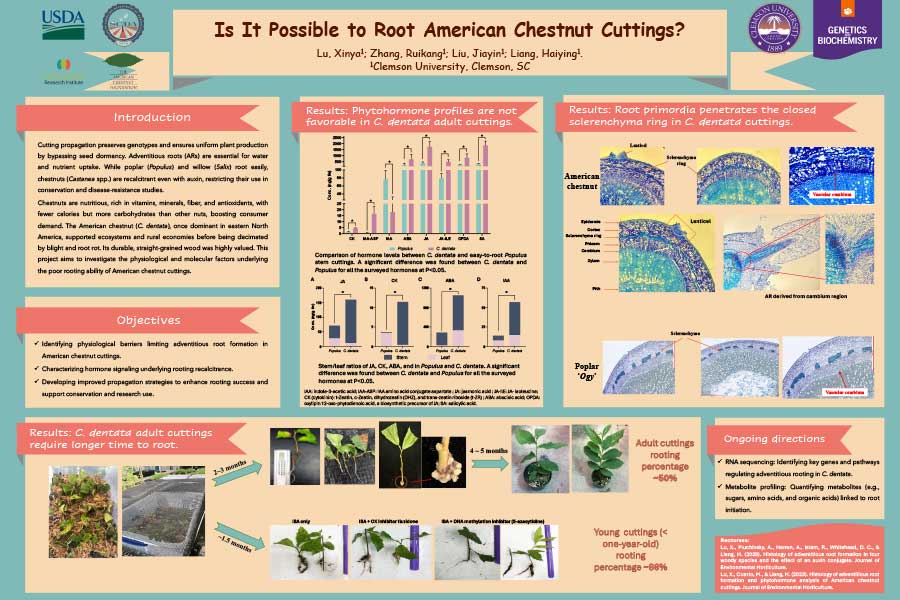2025 Poster Session
Xinya (Sky) Lu et al. 2025
Click image to view PDF.
Abstract
Is it possible to root chestnut cuttings?
Lu, X1; Zhang, R1; Liu, J1; Liang, H1. 2025
1Clemson University, 105 Collings Street, Biosystems Research Complex, Clemson, SC
Propagation by cutting is a widely used method for preserving and propagating desirable genotypes in many woody plant species. Because cuttings are clonal, they allow for uniformity in plant production and bypass seed dormancy and germination, resulting in faster plant maturation. Successful propagation by cutting requires the formation of adventitious roots (ARs), which enable water and nutrient uptake. While species like poplar (Populus) and willow (Salix) readily form ARs, others, such as chestnuts (Castanea spp.), are recalcitrant, even when exogenous auxin, the key hormone for AR induction, is applied. This rooting difficulty severely limits the use of chestnut cuttings in conservation and research efforts, including disease resistance assays.
Chestnut trees produce nuts that are favored by many people. They are nutritious and provide many health benefits. They are a good source of many vitamins, minerals, fiber, and antioxidants. Compared to other nuts, they contain fewer calories but more carbohydrates, making them increasingly popular among consumers. Their unique taste and various health benefits are driving a significant increase in demand. The American chestnut (C. dentata), once dominant in the hardwood forests of eastern North America and Canada, played a crucial role in forest ecosystems and rural economies before its population was devastated by blight and root rot. Its wood was prized for being rot-resistant and straight-grained.
This project aims to investigate the physiological and molecular factors underlying the poor rooting ability of American chestnut cuttings. We will present our findings at the poster session, including insights into rooting recalcitrance and the development of improved propagation techniques.

